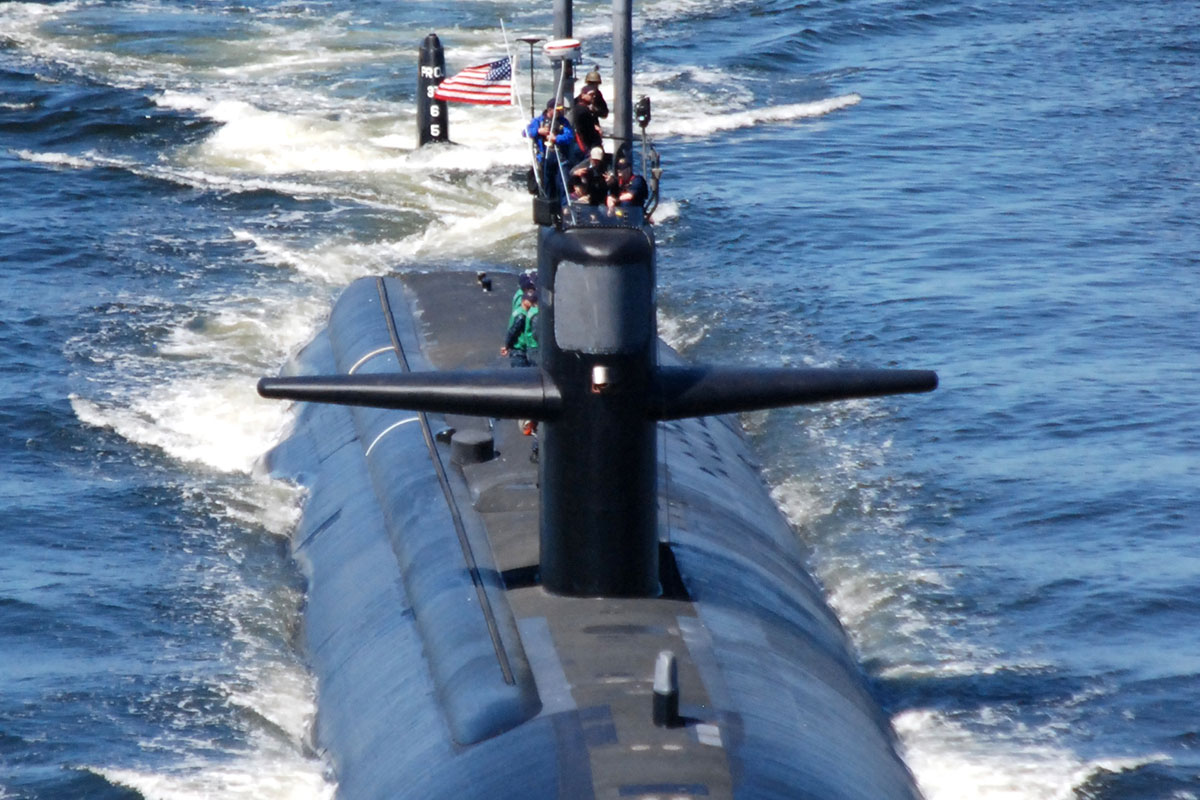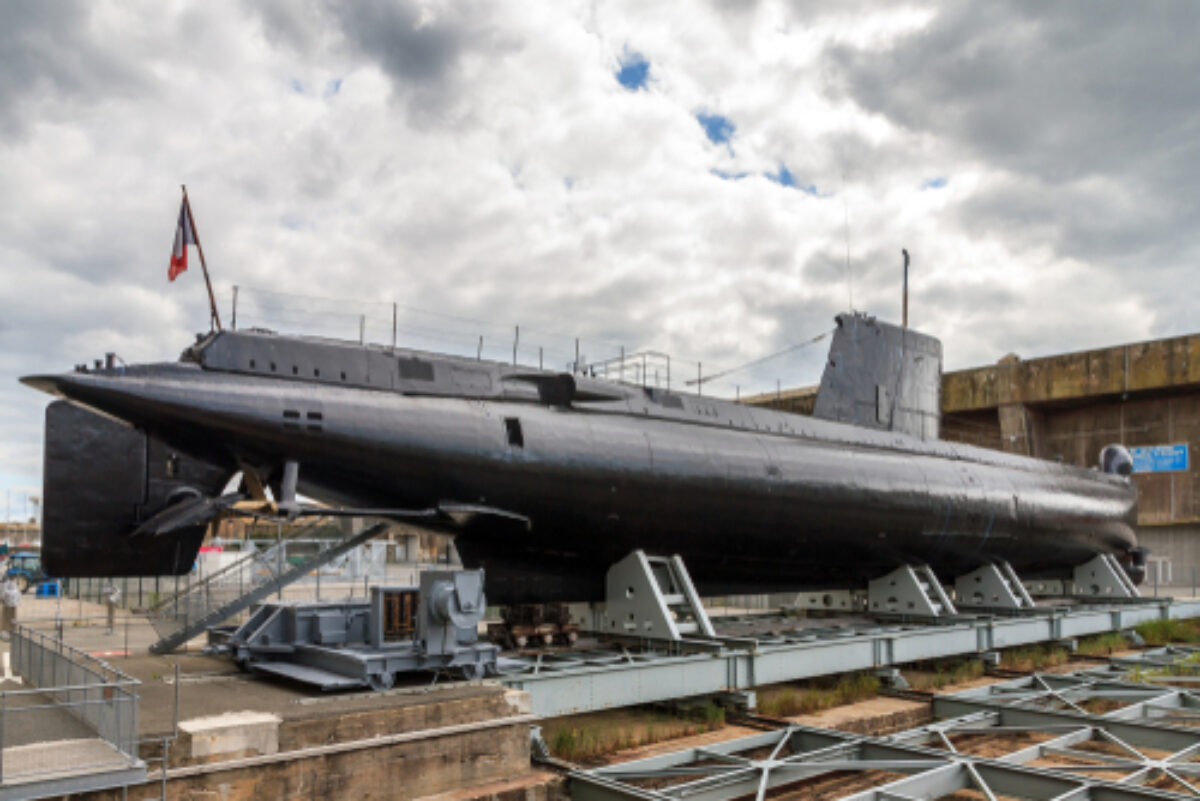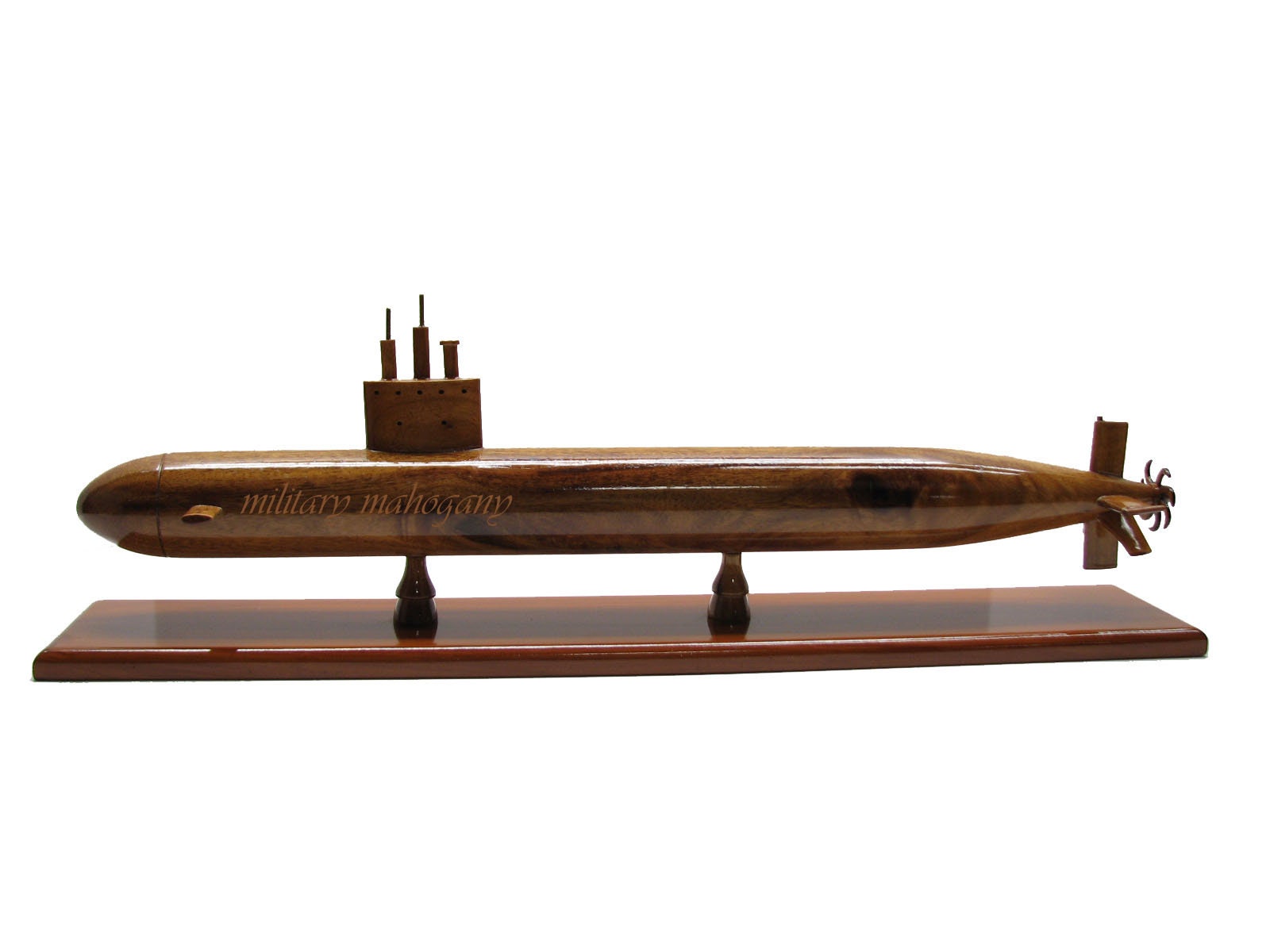L A Submarine - BQQ-5 series active and passive system sonar, BQS-15 detection and frequency sonar, WLR-8V (2) ESM receiver, active search sonar and acoustic homing torpedoes detection WLR-9 acoustic receiver, BRD-7 including a radio direction finder. seeker
4 × 21 (533 mm) torpedo tubes, 37 × Mk 48 torpedoes, Tomahawk land attack missiles, Harpoon anti-ship missiles, Mk 67 mobile or Mk 60 CAPTOR mines (FLTII and 688i FLTIII have 12-tube VLS)
L A Submarine

The submarine Los Angeles is a nuclear-powered fast attack submarine (SSN) in service with the United States Navy. Called the 688 class (pronounced "six-eight") after the USS Los Angeles (SSN-688), 62 were built between 1972 and 1996, and the next 23 were upgraded to the 688i standard. As of 2022, the Los Angeles class' 26 remain more than any other class in the world, and account for more than half of the US Navy's 50 fast attack submarines.
The Los Angeles Class Fast Attack Submarine Uss Asheville Wall Art, Canvas Prints, Framed Prints, Wall Peels
Longevity varied, with 12 of the 688s decommissioned halfway through their expected service lives, with USS Baltimore being the youngest retirement at 15 years and 11 months.
Another five were decommissioned early (20-25 years), the mid-stage reactor fuel was decommissioned, and one was lost during repairs due to burnout. All of the ships retired as part of the Navy's ship-submarine rehabilitation program have been decommissioned or decommissioned.
This type of submarine is named after American cities such as Albany and New York. With the exception of Los Angeles, California and Tucson, Arizona, the USS Hyman G. Rickover is known as the "Father of the Nuclear Fleet." This was a change from the traditional naming of submarines after sea creatures, such as USS Seawolf or USS Shark. In response to the decision to name submarines after cities (sometimes politicians get paid for the wrong issues), Rickover said the fish "wouldn't vote."
After 31 boats were built in 1982, the class was slightly updated. The second "flight" consisted of 12 vertical launch tubes capable of firing eight Tomahawk missiles from below. Final 23 has a major update with the 688i enhancement program. These boats are quieter and have more advanced electronics, sensors and noise reduction technology. The submarine is mounted on the bow rather than the sails and can be towed.
China's Newest Attack Submarine Now Stationed Near Taiwan
According to the US Department of Defense, Los Angeles-class submarines have a top speed of more than 25 knots. Some published estimates put the top speed at 30–33 mph (56–61 km/h; 35–38 mph).
In his book Submarines: A Guided Tour Inside a Nuclear Warship, Tom Clancy estimated the top speed of a Los Angeles-class submarine at about 37 knots (69 km/h).
Not governed. According to the 2004-2005 edition of Battleship Jane, edited by Royal Navy Commodore Steph Saunders, the maximum diving depth is 1,475 feet (450 m).

A port bow view of the forward section of the USS Santa Fe installed in February 1994: the Tomahawk Mark 36 vertical launch system door is in the "open" position.
Uss Los Angeles Class Flight Iii (688 Improved) Attack Submarine
Los Angeles-class submarines carry approximately 25 torpedo tubes, as well as Mark 67 and Mark 60 CAPTOR mines for horizontal (from the torpedo tube) firing of Tomahawk cruise missiles and Harpoon missiles. The last 31 boats of this type (Route II/688i) also have 12 vertical launch system tubes for launching Tomahawks. The first two ships of the second flight have different tube layouts than the later ships: Providence and Pittsburgh have four rows of three tubes, the inner two rows of four, and the outer two rows of two tubes.
In almost 40 years, the classroom control set has changed a lot. The unit was initially equipped with the Mk 113 mod 10 anti-fire system known as the Pargo display. The Mk 113 runs on the UYK-7 computer.
The Mk 117 FCS replaced the Mk 113 as the first "all digital" fire control system. The Mk 117 transferred the functions of the analog Mk 75 attack director to the UYK-7 and the digital Mk 81 weapons control console. Converting two analog and digital mk 48 controls to allow "all digital" control.
The Mark 1 Combat Control System/All Digital Attack System replaced the Mk 117 FCS on which it was based. The Mk 1 CCS was developed by Lockheed Martin and gave the unit the ability to launch Tomahawk missiles.
A Los Angeles Class Attack Submarine 'sank' During This Wargame
CSS's internal control model allows for handling drag and drop group trackers. Trackers are signal followers that report range, angle of attack, and frequency based on information received by sound waves. It introduced a Gyro Static Navigator into the system in place of the DMINS of the previous 688 class.
The Mk 1 CCS was replaced by the Mk 2 developed by Raytheon. The Mk 2 Tomahawk Block III vertical launch capability, as well as the Mk 48 ADCAP torpedo and Towed Arrays, allow fleet-requested improvements in target motion analysis operations. The Mk 2 CCS combined with the AN/BQQ-5E system is known as the "QE-2" system. The CCS MK2 Block 1 A/B system architecture extends the CCS MK2 tactical system with an advanced tactical computer network. 3) These TAC -3s are equipped with support for SFMPL, NTCS-A, LINK-11 and ATWCS subsystems.
The AN/BQQ-5 ssor suite consists of an AN/BQS-13 beam sounder array and an AN/UYK-44 computer. The AN/BQQ-5 is based on the AN/BQQ-2 sonar system. BQS 11, 12 and 13 spherical arrays have 1241 conductors. There are also two brackets that fit the 104-156 hydrophone and towed models: the TB-12 (later replaced by the TB-16) and the TB-23 or TB-29, in multiple versions. There are 5 versions of the AN/BQQ-5 system, designated A-E in sequence.

The 688i (Improved) unit was originally equipped with the AN/BSY-1 SUBACS advanced anti-submarine warfare system and was equipped with an upgraded AN/BQQ-5E ssor system of computer and interface equipment. The successor to the AN/BSY-1 and its sister submarine class, the AN/BSY-2, has been one of the Navy's most problematic programs, with cost and deployment challenges. many difficulties.
Submarine On The Ronda De Dalt
Using the AN/BQR-24 internal processor, a set of matching passive hydrophones were rigidly mounted on either side of the enclosure. The system uses FLIT (Frequency Line Integration Control) which contains precise noise frequencies and uses the Doppler principle to provide a very quiet solution for submarine guidance. The mounting group of the AN/BQQ-5 doubles the performance of its predecessor.
The AN/BQQ-5 system replaced the AN/BQQ-10 system. Designated AN/BQQ-10, Acoustic Rapid Commercial Integration (A-RCI) is a four-phase program to replace existing submarine sound systems (AN/BSY-1, AN/BQQ-5, AN/BQQ-). 6) From systems to a more capable and flexible COTS/Op System Architecture (OSA), as well as providing submarines with a common sound system. The single A-RCI Multiprocessor (MPP) on board the submarine Balloon Los Angeles (SSN-688/688I) has integrated computing capabilities that enable the development and use of complex algorithms previously unattainable by older processors. Using COTS/OSA technology and systems will receive regular software and hardware updates. COTS-based processors allow the computer industry to grow in parallel with the commercial industry.
Los Angeles-class submarines use two watertight compartments. The forward section contains living space for the ship's crew, space for handling weapons, and control space that is not essential for thrust recovery. The bulk of the aft compartment contains the submarine's exhaust system, power turbines, and water generating facilities.
Some submarines in this class are able to deliver Navy sealant using either a dry deck-mounted sealant or an advanced stern-mounted sealant delivery system.
Colombian Navy Submarine Participated In International Operation Desi 2022
To keep the ship dry for long periods of time, various atmospheric control devices are used, including electrolytic oxygen generators, which produce oxygen for the crew. Hydrogen is produced by immersion in water, but there is always a risk of fire or explosion during the process.
Submarines on the surface or deep in the ocean can use the submarine's auxiliary and emergency diesel generators for power or propulsion.
The Class 688 diesel can be quickly started with compressed air in an emergency or to disperse toxic (volatile) gases in the boat, but requires powering the "swinging" serpentine head. Under normal conditions, design constraints require operators to bring the generator up to normal operating temperature before generating full capacity, a process that takes 20 to 30 minutes. However, diesel generators may be immediately loaded to 100% capacity at the discretion of the submarine commander, notwithstanding standard design warnings, if necessary: (1) to restore the submarine's electrical power; (2) prevention of occurrence and spread. reactor, or (3) protect the lives of crew members or others;

Working of a submarine, tour a submarine, inside a submarine, make a submarine, l class submarine, life on a submarine, jobs on a submarine, images of a submarine, picture of a submarine, working in a submarine, a yellow submarine, price of a submarine

0 Comments